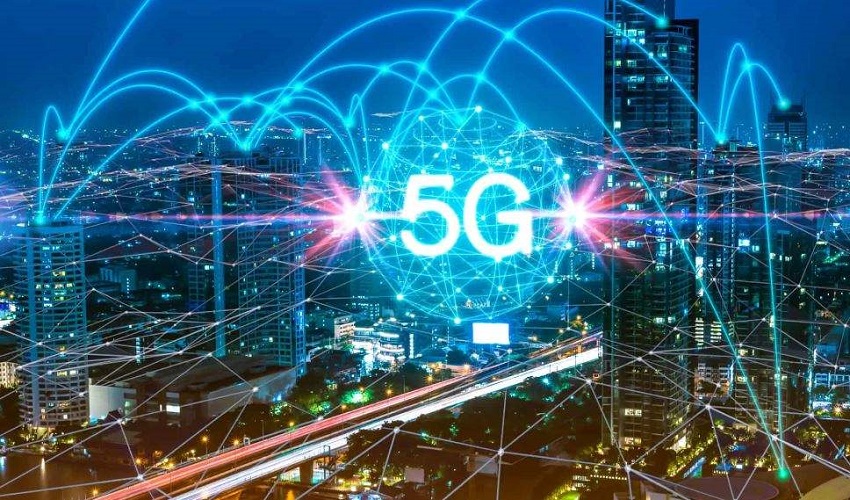What is the Internet of Things?
The “Internet of Things” refers to the billions of physical devices now connected to the Internet and involving the collection and exchange of data. Thanks to the widespread availability of wireless networks and the advent of ultra-cheap computer chips, it’s now possible to make everything from pills to jets part of the Internet of Things.
Connecting all these disparate products and embedding sensors on them can provide digital intelligence to otherwise clunky machines, allowing them to transmit real-time data without the need for humans. By merging the digital and physical worlds, IoT is making the world around us more innovative and responsive.
The role of IoT in business transformation
An IoT platform is a collection of components that can be used to deploy applications to monitor, control, and manage devices connected to a central server. The suite also allows connected devices to send and receive data to each other.
As IoT solutions play a vital role in digital transformation, it has recently evolved from the experimental stage to the stage of creating business value. The continued expansion of the IoT industry will become a digital force for all businesses.
Thanks to the digital revolution, businesses can use IoT to gain a competitive advantage and create better consumer experiences. Here are a few ways the Internet of Things can help enterprises transform:
-
Assist businesses with inventory management and asset tracking
-
Support enterprises in interpreting key data that promotes organizational development
-
IoT platform helps plan and form new business lines
-
Ability to plan effective marketing strategies
-
Drive real-time insights into buyers, sellers and retailers
-
Promote multi-channel services
-
Improve customer experience
-
Maximize productivity and overall efficiency
-
Generate new customer needs
-
Promote changes in consumption patterns
5G and IoT
The cornerstone that unlocks the full promise of IoT is 5G. While 5G has already been commercially available in 2020, the industry is currently working hard to create new global standards and 5G equipment to benefit all industries.
5G is a game-changer because it allows for faster, more secure, and more stable communications, helping to power everything from self-driving cars to renewable energy smart grids and artificial intelligence-enabled manufacturing robots.

We are on the verge of a giant leap in invention that will change the fabric of our civilization. The Internet of Things (IoT) and 5G technology represent more than just a new generation of wireless technology.
It marks a turning point for the mobile ecosystem, unlocking a powerful combination of incredible speeds, greater bandwidth, low latency and greater energy efficiency that will power billions of new connections over the next five years, And in doing so, change our world.
The impact of 5G on the development of the Internet of Things
5G enables faster, more stable, and more secure connectivity, powering everything from self-driving vehicles to renewable energy smart grids and artificial intelligence factory robots. It is launching a massive IoT ecosystem that can support billions of connected devices while balancing speed, latency and cost.
Here are a few ways 5G will play a key role in the development of IoT:
Provides a more stable connection
In the Internet of Things, network reliability is more important than speed. Any undetermined downtime will hinder the functioning of the ecosystem while also jeopardizing confidentiality. Even in the most basic home IoT use cases, such as automatic locks, security cameras, and smart appliances, network uptime is critical.
5G networks ensure this. They can manage more devices, deliver faster speeds (10x), and create a secure device communication ecosystem. Therefore, low latency and high-speed connections will help the next generation of IoT devices, allowing for more complex activities.
faster signaling
In many ways, 5G and IoT are mutually beneficial. While all nodes in an IoT network require strong signaling, 5G uses a technology called beamforming to provide the necessary infrastructure. It collects signals from multiple antennas and directs them to a single device.
Beamforming is useful because it can span physical obstacles, such as walls, ensuring uninterrupted signal flow. This process is considered one of the most impactful 5G features as it focuses on transmitting high-quality signals to drive the IoT ecosystem.
remote inspection
One of the most common IoT applications is remote inspection of equipment and operations. For example, the power and energy sector has a wide variety of equipment in many places and to avoid any kind of disruption, transformers, grids, poles, etc. should be inspected regularly.
Technicians can remotely monitor IoT smart infrastructure to reduce the need for physical visits to facilities thousands of miles away. Likewise, trains can leverage IoT sensors to detect track issues and issue timely alerts. Or they might predict train delays and communicate them to all stations along the way.
Businesses have many opportunities when it comes to integrating device automation into business processes. As the industry evolves, companies that take action first will have long-term impacts.
On the other hand, building an IoT vertical is no easy task. Since IoT relies on various disciplines such as hardware and software, they must prioritize planning before entering the development phase.
Riassumere
The Internet of Things (IoT) is extremely popular and is growing at the same rate as the Internet. Enterprises must maximize process automation and focus on 5G innovation.
Experts estimate that 5G bandwidth will be ten times faster than 4G, which is nothing short of a revolution. Therefore, businesses of all kinds, no matter how big or small, should not hesitate to explore the possibilities in this area.
Parole chiave: Internet of Things data transmission